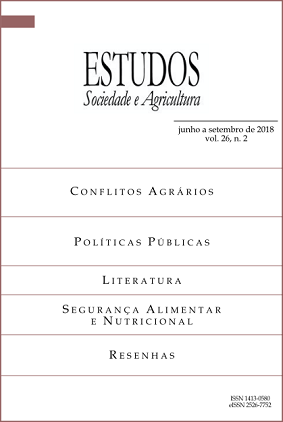Comparative analysis of the PNAE development between the state and municipal schools of Santa Maria-RS with respect to the potential elements of Food and Nutritional Security (SAN)
Análise comparativa do desenvolvimento do PNAE entre as escolas estaduais e municipais de Santa Maria (RS) à luz dos elementos potenciais da Segurança Alimentar e Nutricional (SAN)
DOI:
https://doi.org/10.36920/esa-v26n2-9Abstract
The National School Feeding Program (PNAE) is the main governmental program for feeding school children and young people, whose guidelines, over the past few years, are increasingly based on the assumptions of Food and Nutritional Security (SAN). The objective of this work is to compare the two forms of operationalization of the PNAE, with emphasis on the two types of management: decentralized (state schools) and centralized (municipal schools), based on the perception of the actors involved in the operationalization of the program in relation to efficiency and possible inefficiencies in compliance with SAN principles in the municipality of Santa Maria – Rio Grande do Sul (RS), Brazil. Secondly, the study involves consideration regarding the capacity of the PNAE in the form in which it has been developed to potentialize sustainability. The study consists of an in situ sample survey, in the state and municipal schools of Santa Maria–RS, and in a literature review. The results show that despite the importance and scope of PNAE in the municipality, the program does not fully meet the assumptions of the SAN; in consequence, it is also incapable of promoting the full potential of sustainability present in the conjectures of the program. In state schools, the main obstacles are related to infrastructural deficiency, while in municipal schools, this factor has a less prominent negative influence, but another factor reduces effectiveness in school meals, that being the obstacles related to the acquisition of more “fresh” food. Although the PNAE is an important public policy with potential for intersectoral dynamization, it has nevertheless been unable to fully reach at the local level its capacity to promote sustainability. Greater effectiveness in the internal dimension of the PNAE, and in promoting broader social change towards sustainability, is linked to the commitment of all the social actors involved in its implementation, as well as in the state's capacity to manage and arbitrate conflicts and inevitable inefficiencies encountered along the way.
PAULI, Rita Inês Paetzhold; SCHULZ, Jéferson Réus da Silva; ZAJONZ, Bruna Tadielo; STEINDORFF, Kelen. Análise comparativa do desenvolvimento do PNAE entre as escolas estaduais e municipais de Santa Maria (RS) à luz dos elementos potenciais da Segurança Alimentar e Nutricional (SAN). Estudos Sociedade e Agricultura, jun. 2018, v. 26, n. 2, p. 447-479, ISSN 2526-7752.
Downloads
Downloads
Published
Issue
Section
License
Authors who publish in this journal agree to the following terms:
a) Authors maintain the copyright and grant the journal the right of first publication, with the work simultaneously licensed under the Creative Commons Attribution License which allows the sharing of the work with acknowledgment of authorship and initial publication in this journal.
b) Authors are authorized to take additional contracts separately, for non-exclusive distribution of the version of the work published in this journal (eg publish in institutional repository or as a book chapter), with acknowledgment of authorship and initial publication in this journal.
c) Authors are allowed and encouraged to publish and distribute their work online (eg in institutional repositories or on their personal page) at any point before or during the editorial process, as this can generate productive changes, as well as increase the impact and citation of published work (See The Effect of Free Access).






